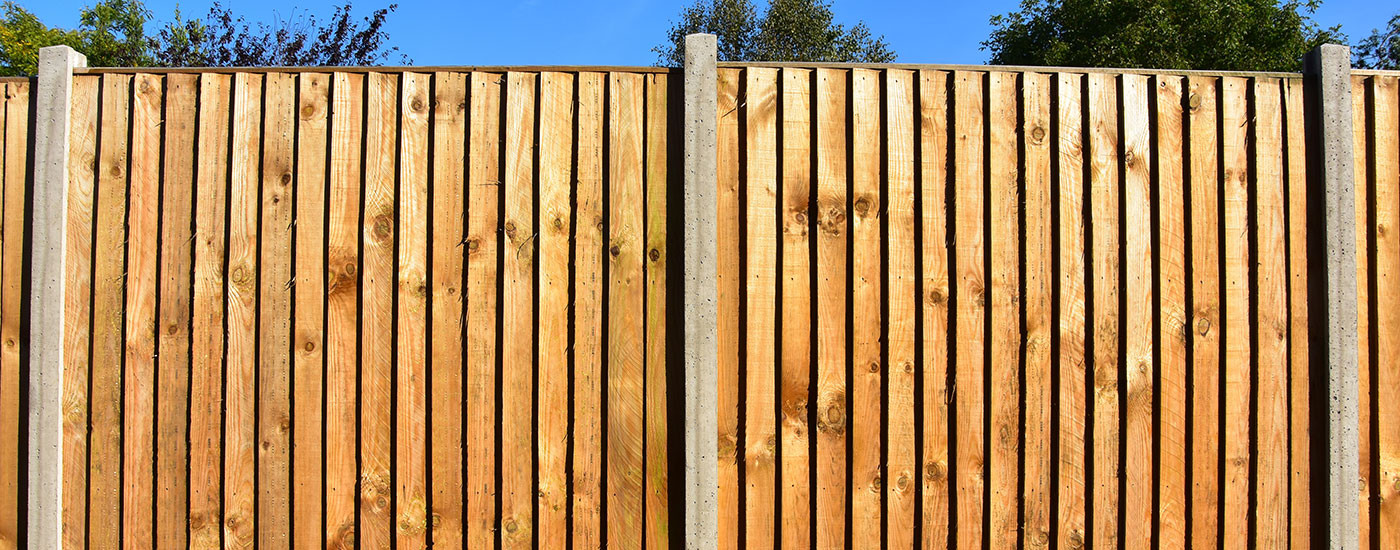Although it may need two people to install a timber fence with concrete fence posts and gravel boards, because of their weight, there are many benefits to this type of fence.
The advantages of using concrete fence posts and gravel boards
- Concrete fence posts are strong, durable and long lasting, requiring no maintenance once installed.
- Completely rot resistant, concrete fence posts will withstand the strongest winds.
- Slotted concrete posts require no fixings, as fence panels simply slide into place.
- Concrete fence posts and gravel boards create a solid and resilient wind and sound barrier that is cost effective.
Before starting an installation, it is important to select the correct fence posts for the job. At Witham Timber, our concrete fence posts are steel reinforced for strength and produced to British Standards 1722 and 12839.
Types of concrete fence posts
Slotted concrete fence posts are supplied as corner posts, intermediate posts, and end posts. Concrete corner posts have two slots running the entire length of the post at 90° to each other, and can accommodate two fence panels allowing you to form a corner in, and change the direction of, your fencing run.
Intermediate concrete fence posts are used along the length of a straight fencing run to join two panels. They have slots on two opposite sides and are finished with one pyramid shaped end and a sloping end.
Concrete end posts, as the name suggests, are used to finish the end of a fencing run and therefore have a slot on one side only.
Concrete posts are installed to a depth of approximately two feet so purchase posts that are longer than the height of your fence panels plus the depth of the gravel boards.
Concrete gravel boards
Concrete gravel boards form the protective layer between the ground and the timber panels in a run of fencing. They give the fence a solid base and protect against the panels rotting, through contact with groundwater.
Installing concrete posts and gravel boards
Mark out the path of your fence and position your first fence post. Using a gravel board to measure the distance between each post, mark where they will all go. When digging the post holes, remember to go down into the ground at least two feet, making the hole three times wider than the post. The posts will need to be secured in the holes with concrete or Postcrete (see Postcrete Vs concrete for more information) so add several inches of gravel to the bottom of the hole, packing it down to compact it before inserting the post.
Insert the post into the hole and use a spirit level to ensure the post is straight and true before adding the concrete or Postcrete mix. Fill to just above ground level and slope the mix away from the post as this will allow water to run off. When using Postcrete, the post needs to be supported for ten minutes for the mixture to set enough for you to move on to the next. With concrete however, it can take up to 7 days to set so posts will need to be supported by wooden battens during this period.
Installing concrete gravel boards
Gravel boards can be inserted into slotted concrete fence posts from the top, once the concrete mix has hardened enough to weight bear.
Installing fence panels
Timber fence panels can be slotted into the posts from the top, once the gravel boards are in place. This should be done by at least two people to negotiate the size of the panels and the height of the posts safely.
TOP TIP - rubbing an old candle down the post grooves will make it easier for the gravel boards and fence panels to slide in.
Fencing from Witham Timber
For further advice about your next project don’t hesitate to speak to our fencing experts at Witham Timber. With over 40 years’ experience in the supply of quality fencing products, our friendly sales team can be contacted by phone on 01205 359188 or by email at sales@withamtimber.co.uk

